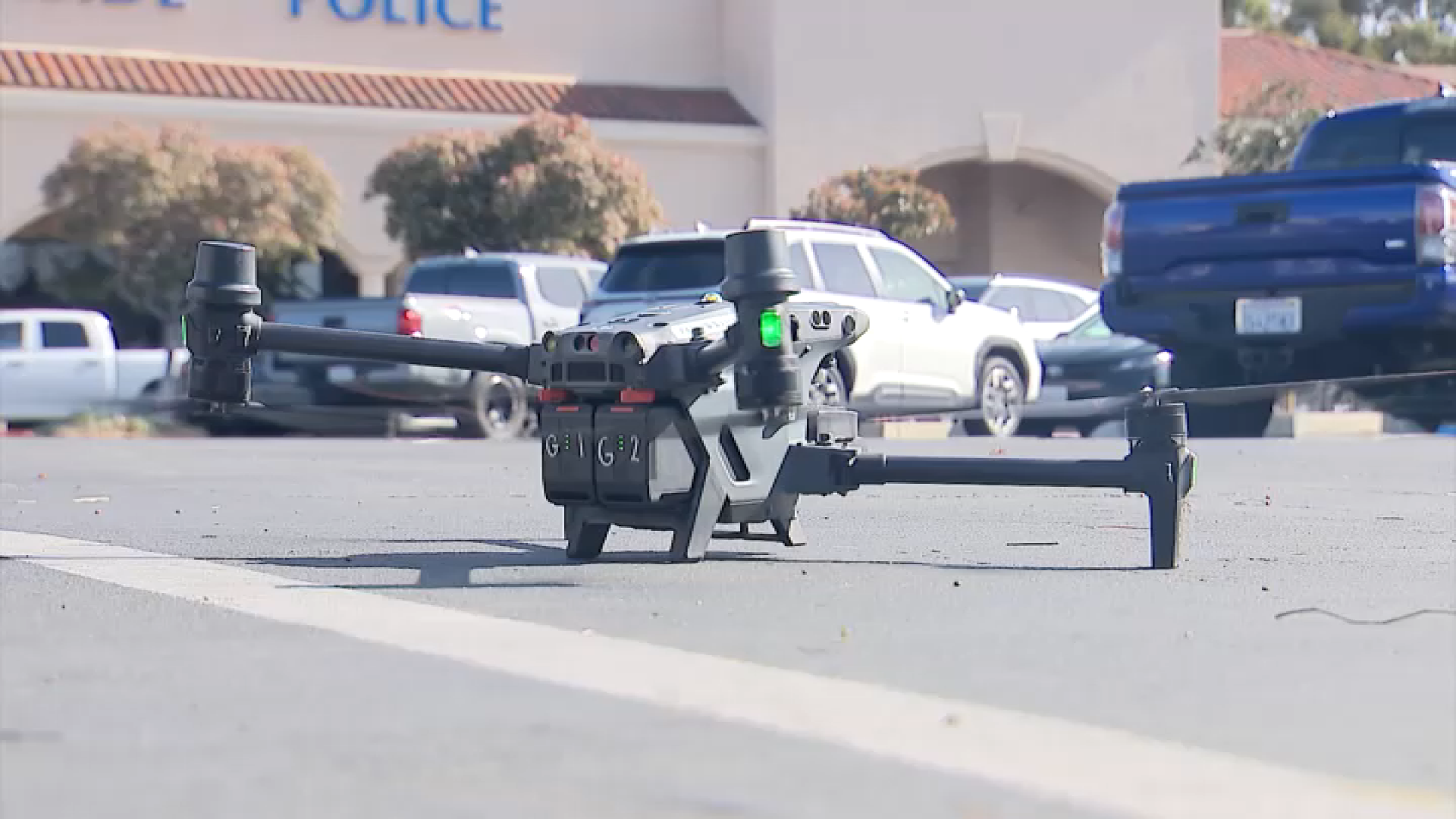Some local leaders are questioning San Diego Police’s ways while deploying ShotSpotter, a technology that pinpoints the location of shots or explosions. NBC 7 Investigates’ Mari Payton reports.
It was a troubling conflict for Kenneth Malbrough.
"I am a firm believer in our police department and I believe law enforcement is necessary for our community and I want it in my community,” Malbrough said.
Malbrough is a former City of San Diego employee serving with the San Diego Fire-Rescue Department for 31 years. While with the department, he spent a good deal of his career on the streets of San Diego interacting with police officers at fire, disaster and rescue scenes.
But, as he told NBC 7 Investigates, he feels the San Diego Police Department, fell down on the job when it came to an important element in their effort to be connected to the communities the agency serves.

Malbrough lives and volunteers in his neighborhood of O’Farrell. The neighborhood was chosen along with the neighborhoods of Encanto, Skyline and Paradise Hills, as locations for a new SDPD acoustic surveillance technology called ShotSpotter. The technology pinpoints the locations of shots fired or explosions and alerts police within 45 seconds.
According to Malbrough, he learned of the plans to activate the system seven weeks before it was installed and only learned of these installation plans after receiving an environmental review notice, required by law, which was sent to residents in his neighborhood. The document contained little information about ShotSpotter.
Searching emails and other documents obtained through the California Public Records Act (CPRA), NBC 7 Investigates has tried for months to determine exactly when the decision was made to buy the the new technology. Repeated requests for specific details on when the purchase was made, resulted in responses from the SDPD that lacked any specifics.
Local
To learn more about the CPRA click here.
As an active community member, Malbrough said he wondered why he didn't know about the installation of the system before it was a done deal.
One of his main questions: "It (ShotSpotter) appears to collect a lot of data, which got me thinking, what do they do with the data?"
He said he wondered if the information generated by the data might affect his home's value, he also said he was concerned it might increase his insurance rates.
NBC 7 Investigates came across Malbrough's inquires to police when reviewing the documents obtained through the CPRA. His request generated a fact sheet about the system from the company that sells ShotSpotter.
After reading about how the system worked, Malbrough said, "most community members would have said, ‘you know what, this is not a bad idea,’ I just have a few questions I want some assurances.”
A representative with the SDPD responded to his inquiry and told him the data collected would be kept only for investigations, it would not be sold to others, including insurance companies. Malbrough said he appreciated the response to his inquiry but the way the SDPD communicated with community bothers him. It “bothers me a lot," he said.
Emails obtained through the CPRA, show early on, SDPD's may have been concerned about revealing the location of the ShotSpotter sensors.
According to an email from the SDPD’s Sergio Zamora, "The city engineer put a stop to the installation because they wanted ShotSpotter to open an SDGE account before moving forward. As you know if ShotSpotter were to open an account with SDGE it would reveal the sensor locations."
Malbrough, who sits on a several city and community boards, some of which are attended by police officers, said it seemed odd to him that there was never mention of the ShotSpotter program.
"Why was it so secretive?” he said. “Why didn't you want to have these discussions? Why not garner support from the community on this?”
Click here to read Malbrough’s concerns.
San Diego City Councilman, David Alvarez expressed similar concerns. He told NBC 7 Investigates, “we (City Council) did not have to authorize the expenditure of the purchase of the program, so, we actually don’t know anything officially. It’s all from what we’ve been able to gather from news organizations like yours.”
In an email to NBC 7 Investigates, the SDPD Lt. Scott Wahl said, "...We are excited about this new technology and we are hopeful it will help us keep our community safe. We have been open regarding the implementation of this system. Prior to it being installed, we met with City Council, various community leaders and clergy, as well as other law enforcement agencies to get their feedback on how this system works. In addition we submitted the required public record notices including an Environmental Impact Report that allows for public review and comment.”
In 2015, in its assessment of the SDPD, the Police Executive Research Forum's warned, "the department had been disconnected from the neighborhoods it served." The group recommended the agency step-up its communication efforts within communities.
Following the report, in June 2016, SDPD Chief of Police Shelley Zimmerman assured a city council committee her agency had implemented changes as suggested, improving community outreach by adding nine special community relations officers and attending 1,100 community events per quarter.
Click here to read more about the improvements.
NBC 7 Investigates reached out to Councilwoman Myrtle Cole, who represents the area the equipment was installed. When asked if her office was made aware of the program and what effort was done to inform citizens about the new technology coming into the neighborhoods, Cole’s Chief of Staff Jimmie Slack said the police did tell the office about the program, though he didn't provide a specific date for when this occurred.
As to informing the public he said, "It is my understanding that the Police Chief and some of her officers spoke to various community members, community leaders, and community advisory board members about ShotSpotter."
According to Slack, Cole's office depended on the police to do the outreach, they didn’t do any from their office.
Click here to see the full response from Cole’s office.
“At the end of the day, public knowledge of this system (ShotSpotter) acts as a deterrent to those who might think of firing a gun in one of our neighborhoods,” Wahl said. “It doesn't make any sense for us to keep this technology a secret.”
“I think what our duty now is going forward is to make sure there is transparency and these expenditures have actually led to something tangible and positive for the community,” Alvarez said.



